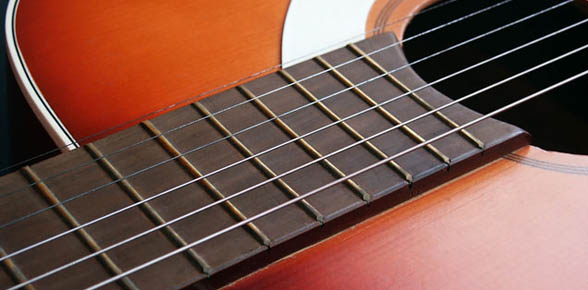
This past weekend we, here in the United States, celebrated Thanksgiving. However, the day after – affectionately known as “Black Friday” — is arguably becoming as if not more important. You may consider that a tragedy but the reality is that we are a consumer nation and the philosophy these days is it’s never too soon to buy gifts.
Well, with Christmas rapidly approaching, I’m guessing that a few of you may be looking for Santa to bring a new guitar. Perhaps you’ve never played before and have always wanted to try? Or, maybe you are a seasoned guitarist who wants to upgrade? Regardless, embracing your new guitar will be one of the sweetest days of your life.
But is a guitar really an ideal gift?
Not exactly and here is why. Prior to buying an instrument that will set you back several hundred, you should test it out with your hands. You’ll discover in our guide to finding the right guitar below that you should check several features of the guitar before handing over the cash. Hence, if you really want a guitar for Christmas let your parents know, go with them to the store, try out a few different guitars, tell them which one suits you best and then act pleasantly surprised when you get that very same guitar Christmas day.
Finding the Right Guitar
Before we begin, please note that a common pitfall for beginning students is simply that they are learning on the wrong guitar. Heed to this advice and you will be properly equipped.
#1 Do you really need to go full-size?
Going “full-size” may sound like a question from a car salesman or a McDonalds combo meal, but the term also applies to guitars. When we say “full size” guitar we mean its a guitar with a full-length neck. However, does your nine year-old son who may play for a week and completely forget about the instrument really need the full package? Even for serious students, full-size instruments can be bulky, delicate, expensive and harder to play than reduced-scale acoustics. Consider the later for the first guitar.
#2 Electric vs. Acoustic?
Ah, the time tested question. Everyone has a different opinion but the reality is that electric guitars (when properly set-up) are easier to play and chances are, most aspiring musicians want to play music that was recorded with an electric guitar NOT acoustic. Thus, electric is more than likely your answer. Manufacturers like Fender, Yamaha, Ibanez and Washburn all offer quality and budget friendly electric guitars.
#3 Go with the Package
You’ve probably shopped at Wal-Mart or Target before and noticed a beginner’s package that is equipped with everything you need to get started. This, of course, includes the practice amp, cables, picks and actual guitar. You can find quality packages for as low as $300 and make the perfect gift for a beginner.
#4 Double check for “Playability”
What exactly is “playability”? This is determined by the height of the strings from the fretboard, spacing between strings as well as width of the neck. The bottom line is that if these dimensions do not fit to your individual needs, it’s going to make learning twice as hard. Before you buy a guitar, always check to see if you can reach around the body of the guitar with your right hand. With your left, reach around the guitar neck. If the guitar does not pass these two simple tests, it’s not for you. Abnormally large fingers? You may want to look into a guitar with a wider neck.
#5 Consult the expert
This step is so simple but often overlooked either because A) you think you already know everything or B) you’re too afraid to ask because you consider it a dumb question. If you go to a reputable music store, the employees are suppose to be knowledgeable, experts even, with guitars. They can answer your individual questions, concerns, needs and whatever else you need addressed prior to the actual purchase. Ask. It’s not going to hurt you.





